Blogged by Brad Friedman from somewhere in Texas...
"Publicly observable post-election audits are the single most important safeguard we can have for the integrity of elections in this era of computer-assisted voting," according to Livermore National Labs computer scientist David Jefferson.
"They allow everyone, winners and losers alike, to be satisfied that the races are correctly called, but without the need to trust any computers or software," he added in a press release from the California Sec. of State's office released just moments ago (posted in full at the bottom of this item) on the study he led for the SoS Debra Bowen, which examined the effectiveness of --- and made recommendations to improve --- the state's 40-year old 1% manual audit law.
In addition to her stunning announcement on Friday that her team of independent analysts at Univeristy of California, attempting to hack the states electronic voting systems as part of her promised "Top-to-Bottom Review," were able "to bypass both physical and software security measures in every system tested," Bowen has also convened a "Post-Election Audit Standards Working Group" in order to "examine whether California’s post-election audit standards should be strengthened."
Their report has now been released online [PDF].
Among recommendations made by the group (emphasis in original):
- Take a risk-based approach to conducting post-election audits by manually counting a higher percentage of precincts – above the 1% required by law – in close races and in races involving only a small number of precincts.
- Develop an adjustable sample model that fits California’s needs. With an adjustable audit, the size of the random sample for close elections and small races is not a flat percentage, such as California’s current 1%, but is calculated using the margin of victory, number of precincts in the race and other key factors to produce a desired confidence level (for example, 99%) that the winner of the election has been correctly declared.
- Develop a comprehensive approach to verifying election results, including rules for escalating an audit when errors in the machine counts are discovered during the manual count and rules for determining whether to trust the outcome of the election when small discrepancies are found between the manual and machine counts. In California, the law sets no standards when it comes to audit escalation.
"No matter what voting systems California counties use," Bowen said in the statement, "we have to make sure we’re doing meaningful audits of election results to provide voters with the confidence that every vote is counted as it was cast."
The complete press statement on the just-released finds of the "Post-Election Audit Standards Working Group" follows in full below...
Contact: Nicole Winger (916) ###-####
SACRAMENTO – In her continuing effort to ensure the security, accuracy, reliability and accessibility of California voting systems and the elections in which they are used, Secretary of State Debra Bowen today received a final report from the Post-Election Audit Standards Working Group, a group created in June to examine whether California’s post-election audit standards should be strengthened.
“California’s 1% audit law is 40 years old, and the charge of this Working Group was to take a fresh look at whether there’s a way to improve the auditing process to increase the chances of catching any errors and improving the public’s confidence in the election results,” said Secretary Bowen, the state’s chief elections officer.
The Post-Election Audit Standards Working Group spent an intensive four weeks reviewing a variety of studies, examining post-election audit models and talking to national experts in the field of election auditing. The Working Group also held a public forum on July 2.
“This report is an initial step toward what we expect to be an extensive study of election audits over the next few months, as part of Secretary Bowen’s comprehensive strategy for securing California elections,” said David Jefferson, a computer scientist with Lawrence Livermore National Laboratory and chairperson of the Working Group. “Publicly observable post-election audits are the single most important safeguard we can have for the integrity of elections in this era of computer-assisted voting. They allow everyone, winners and losers alike, to be satisfied that the races are correctly called, but without the need to trust any computers or software.”
The Working Group’s report is at http://www.sos.ca.gov/el.../final_peaswg_report.pdf. Highlights of the report include recommendations to:
- Take a risk-based approach to conducting post-election audits by manually counting a higher percentage of precincts – above the 1% required by law – in close races and in races involving only a small number of precincts.
- Develop an adjustable sample model that fits California’s needs. With an adjustable audit, the size of the random sample for close elections and small races is not a flat percentage, such as California’s current 1%, but is calculated using the margin of victory, number of precincts in the race and other key factors to produce a desired confidence level (for example, 99%) that the winner of the election has been correctly declared.
- Develop a comprehensive approach to verifying election results, including rules for escalating an audit when errors in the machine counts are discovered during the manual count and rules for determining whether to trust the outcome of the election when small discrepancies are found between the manual and machine counts. In California, the law sets no standards when it comes to audit escalation.
“How confident should we be that elections name the right winners? This difficult question provides a wonderful opportunity for statisticians and other scientists to help safeguard our democratic process,” said Philip Stark, professor of statistics at the University of California Berkeley and a Working Group member.
The Working Group also suggested several short-term options for improving California’s existing manual count and increasing the chance of detecting error:
- Increase the sample size of the manual count for close races.
- Conduct additional manual count audits of high-risk voting systems.
- Increase the manual count sample size in small counties.
- Consider “targeted audits” where candidates select additional precincts for the manual count in close races.
- Escalate the manual count to investigate discrepancies.
- Select precincts using a transparent method for generating random samples, such as rolling a 10-sided dice.
- Establish uniform procedures for conducting the manual count, including requiring tracking of undervotes, overvotes and cancelled Direct Recording Electronic (DRE) voting machine ballots.
- Increase transparency of the manual count.
- Educate voters who use DRE voting machines about the importance of carefully checking the Voter-Verified Paper Audit Trail for accuracy.
"This working group was the first of its kind convened by a Secretary of State. Fifteen states conduct post-election audits, and the number is growing as more people recognize the crucial need to publicly verify election results,” said Kim Alexander, president and founder of the California Voter Foundation and a Working Group member. “Improving the post-election auditing process will benefit California voters while also providing other states with ideas and examples of how they can strengthen their own processes.”
“The ideas of experts in the fields of statistics and financial auditing have raised the discussion of the post-election manual tally to a higher level. The challenge for elections officials will be to implement additional auditing requirements within the limits of the 28-day canvass period after an election,” said Elaine Ginnold, Marin County Registrar of Voters.
“No matter what voting systems California counties use, we have to make sure we’re doing meaningful audits of election results to provide voters with the confidence that every vote is counted as it was cast,” Secretary Bowen concluded.
Bowen tapped experts in the fields of computer science, financial auditing, statistical analysis, election reform advocacy, and city and county government to form the Post-Election Audit Standards Working Group, including:
- David Jefferson (Chairperson)
Computer Scientist with the Center for Applied Scientific Computing, Lawrence Livermore National Laboratory - Kim Alexander
President and Founder, California Voter Foundation - Elaine Ginnold
Registrar of Voters, Marin County - Amy Lehmkuhl
Certified Public Accountant, Ueltzen & Company, LLP - Kathleen Midstokke
City Clerk, City of Downey - Philip Stark
Professor of Statistics, University of California, Berkeley


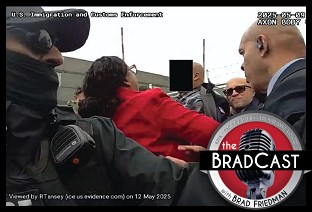 And Then They Came for Members of Congress...: 'BradCast' 5/20/25
And Then They Came for Members of Congress...: 'BradCast' 5/20/25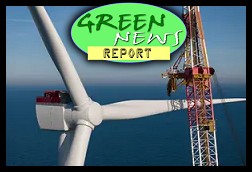 'Green News Report' 5/20/25
'Green News Report' 5/20/25
 Appeals Court Blocks Last Route for Voters to Challenge Violations of the VRA: 'BradCast' 5/19/25
Appeals Court Blocks Last Route for Voters to Challenge Violations of the VRA: 'BradCast' 5/19/25 Sunday 'Now Hoarding' Toons
Sunday 'Now Hoarding' Toons Mad World:
Mad World: 'Green News Report' 5/15/25
'Green News Report' 5/15/25 Plane Corruption and the Future of the DOJ: 'BradCast' 5/14/25
Plane Corruption and the Future of the DOJ: 'BradCast' 5/14/25 'Deeply Evil': GOP Proposes Largest Medicaid Cuts in History: 'BradCast' 5/13/25
'Deeply Evil': GOP Proposes Largest Medicaid Cuts in History: 'BradCast' 5/13/25 'Green News Report' 5/13/25
'Green News Report' 5/13/25 And Then They Came for the Mayors...: 'BradCast' 5/12/25
And Then They Came for the Mayors...: 'BradCast' 5/12/25 Sunday 'New Guy, Old Guy' Toons
Sunday 'New Guy, Old Guy' Toons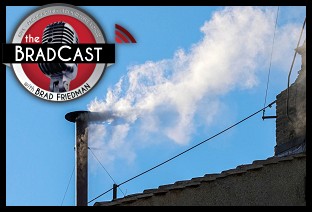 Blowing Smoke. At the Vatican and White House: 'BradCast' 5/8/25
Blowing Smoke. At the Vatican and White House: 'BradCast' 5/8/25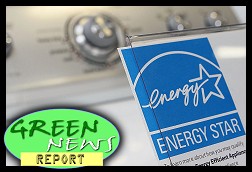 'Green News Report' 5/8/25
'Green News Report' 5/8/25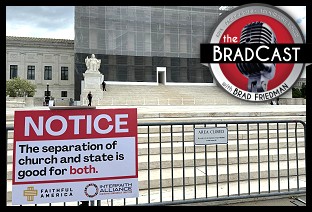 SCOTUS Weighs Public Funding of Religious Schools: 'BradCast' 5/7/25
SCOTUS Weighs Public Funding of Religious Schools: 'BradCast' 5/7/25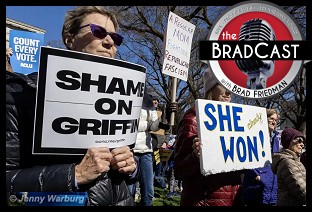 Trump Judge Blocks NC GOP Theft of 2024 Supreme Court Seat: 'BradCast' 5/6/25
Trump Judge Blocks NC GOP Theft of 2024 Supreme Court Seat: 'BradCast' 5/6/25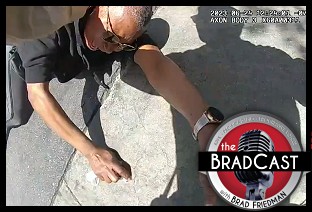 Prosecutors Quit After U.S Attny Strikes Deal With Felon Cop: 'BradCast' 5/5/25
Prosecutors Quit After U.S Attny Strikes Deal With Felon Cop: 'BradCast' 5/5/25 Trump Losing Streak Continues into SECOND Hundred Days: 'BradCast' 5/1/25
Trump Losing Streak Continues into SECOND Hundred Days: 'BradCast' 5/1/25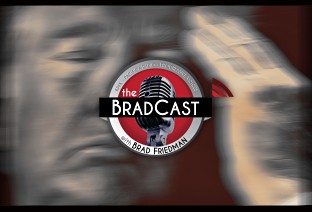 100 Daze (w/ Digby and Driftglass): 'BradCast' 4/30/25
100 Daze (w/ Digby and Driftglass): 'BradCast' 4/30/25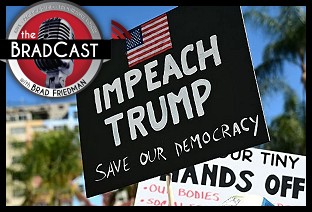 Campaign to 'Impeach Trump Again' Gains Fresh Momentum: 'BradCast' 4/29/25
Campaign to 'Impeach Trump Again' Gains Fresh Momentum: 'BradCast' 4/29/25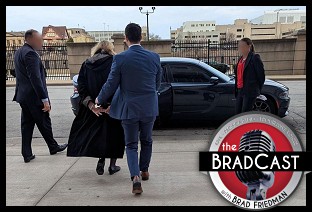 And Then They Came for the Judges...: 'BradCast' 4/28/25
And Then They Came for the Judges...: 'BradCast' 4/28/25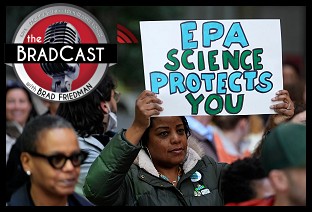 Trump EPA Guts Enviro Justice Office: 'BradCast' 4/24/25
Trump EPA Guts Enviro Justice Office: 'BradCast' 4/24/25
 VA GOP VOTER REG FRAUDSTER OFF HOOK
VA GOP VOTER REG FRAUDSTER OFF HOOK Criminal GOP Voter Registration Fraud Probe Expanding in VA
Criminal GOP Voter Registration Fraud Probe Expanding in VA DOJ PROBE SOUGHT AFTER VA ARREST
DOJ PROBE SOUGHT AFTER VA ARREST Arrest in VA: GOP Voter Reg Scandal Widens
Arrest in VA: GOP Voter Reg Scandal Widens ALL TOGETHER: ROVE, SPROUL, KOCHS, RNC
ALL TOGETHER: ROVE, SPROUL, KOCHS, RNC LATimes: RNC's 'Fired' Sproul Working for Repubs in 'as Many as 30 States'
LATimes: RNC's 'Fired' Sproul Working for Repubs in 'as Many as 30 States' 'Fired' Sproul Group 'Cloned', Still Working for Republicans in At Least 10 States
'Fired' Sproul Group 'Cloned', Still Working for Republicans in At Least 10 States FINALLY: FOX ON GOP REG FRAUD SCANDAL
FINALLY: FOX ON GOP REG FRAUD SCANDAL COLORADO FOLLOWS FLORIDA WITH GOP CRIMINAL INVESTIGATION
COLORADO FOLLOWS FLORIDA WITH GOP CRIMINAL INVESTIGATION CRIMINAL PROBE LAUNCHED INTO GOP VOTER REGISTRATION FRAUD SCANDAL IN FL
CRIMINAL PROBE LAUNCHED INTO GOP VOTER REGISTRATION FRAUD SCANDAL IN FL Brad Breaks PA Photo ID & GOP Registration Fraud Scandal News on Hartmann TV
Brad Breaks PA Photo ID & GOP Registration Fraud Scandal News on Hartmann TV  CAUGHT ON TAPE: COORDINATED NATIONWIDE GOP VOTER REG SCAM
CAUGHT ON TAPE: COORDINATED NATIONWIDE GOP VOTER REG SCAM CRIMINAL ELECTION FRAUD COMPLAINT FILED AGAINST GOP 'FRAUD' FIRM
CRIMINAL ELECTION FRAUD COMPLAINT FILED AGAINST GOP 'FRAUD' FIRM RICK SCOTT GETS ROLLED IN GOP REGISTRATION FRAUD SCANDAL
RICK SCOTT GETS ROLLED IN GOP REGISTRATION FRAUD SCANDAL VIDEO: Brad Breaks GOP Reg Fraud Scandal on Hartmann TV
VIDEO: Brad Breaks GOP Reg Fraud Scandal on Hartmann TV RNC FIRES NATIONAL VOTER REGISTRATION FIRM FOR FRAUD
RNC FIRES NATIONAL VOTER REGISTRATION FIRM FOR FRAUD EXCLUSIVE: Intvw w/ FL Official Who First Discovered GOP Reg Fraud
EXCLUSIVE: Intvw w/ FL Official Who First Discovered GOP Reg Fraud GOP REGISTRATION FRAUD FOUND IN FL
GOP REGISTRATION FRAUD FOUND IN FL

































